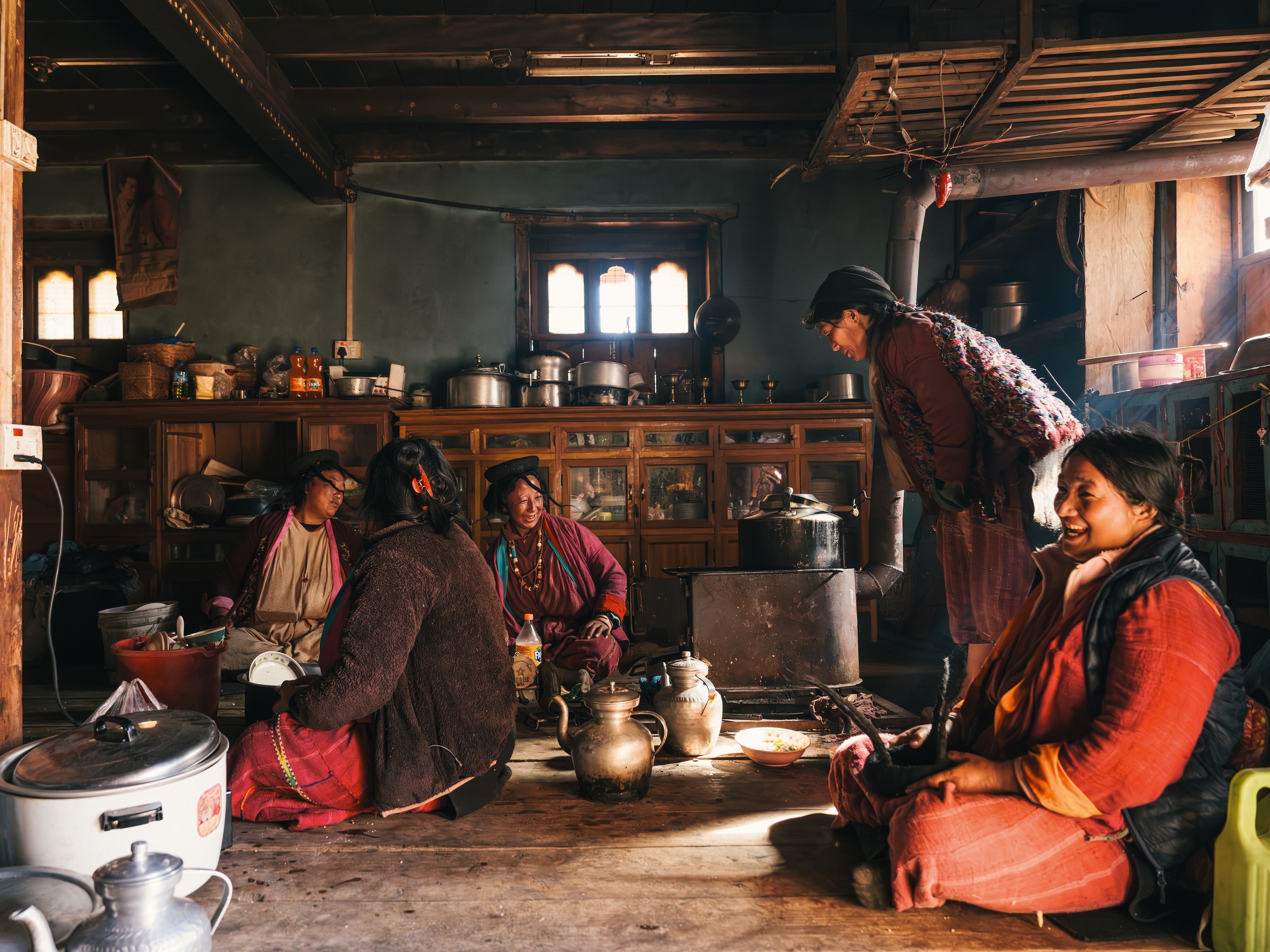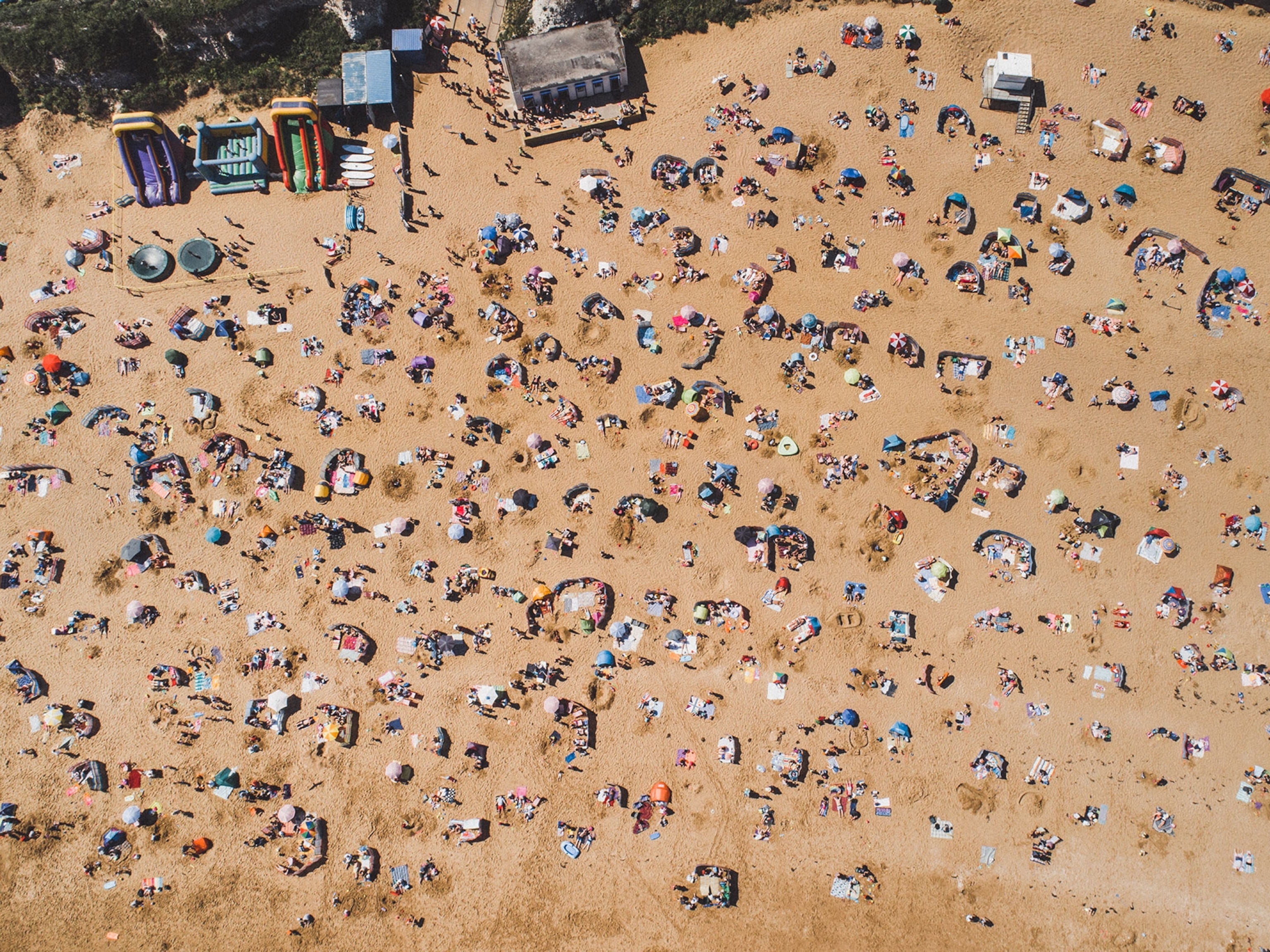
The Best Traveler Photographs of 2013
National Geographic Traveler’s director of photography, Dan Westergren, has the distinct pleasure (and sometimes pain) of choosing which photographs run in the magazine.
The award-winning photographers assigned to our stories come back from the field with such a rich variety of images that it can be hard, if not impossible, to make the final cut. So we asked Dan to make an even tougher call: out of all the photos that ran in every single issue of Traveler last year, which were his favorites and why?
Here’s the crème de la crème of photography from National Geographic Traveler in 2013:
Cotton Coulson and Sisse Brimberg
“Warsaw, Liberated,” August/September 2013 issue

Dan’s take: The “city story” is a Traveler staple for obvious reasons, but this type of coverage isn’t always easy for photographers. Urban pictures tend to look alike, and it can be challenging to capture something distinctive. This particular story is organized around the writer’s recollection of a 1979 secret police encounter in Warsaw–and contrasting that experience with the Polish capital of today. Husband-and-wife photographer team Sisse and Cotton were faced with the difficult task of making the city look beautiful, while trying to convey a mysterious, spooky feeling. They pulled it off by taking this photo from the window of their hotel room at 5:00 a.m. I must point out that it was not by accident that they booked a room overlooking Castle Square, the most visited square in Warsaw.
Susan Seubert
“Aloha, Honolulu,” December 2013/January 2014 issue

Dan’s take: When photographers are out in the field shooting pictures for the magazine, they’ll often try to find a character that seems to embody or personify a given place in order to provide readers with a more intimate, personal view of a destination. Susan struck gold with George Kam (in the foreground), the “Ambassador of Aloha” at Quiksilver, Inc. It’s hard to go wrong when you’re photographing an outrigger ride with someone that has such an interesting job title!
Peter McBride
“Paradise Lost and Found,” December 2013/January 2014 issue

Dan’s take: Pete and the story’s writer, David Lansing, hoped to find Lake Paradise, a massive body of water in Kenya that American adventurers Martin and Osa Johnson had visited in the 1920s. Once we learned that the lake was not as impressive as it had once been, everyone worried that what they would find there would be terribly underwhelming. Pete told me about an interesting wildlife camp that they would pass on the way to their final destination. So, to make sure we had a strong visual story line we added Sarara Camp to the itinerary. Ironically, this photo ended up being the lead image for the feature. It pays to do research!
Aaron Huey
“America’s Cathedrals,” October 2013 issue

Dan’s take: Writer Mark Jenkins suggested to us that we should send him out on a story about the places in America that were our versions of the world’s great landmarks. His idea was that Devils Tower and the Yosemite Valley were America’s Notre Dame (which provided inspiration for the title of the resulting feature story). The difference of course is that the visitor doesn’t experience Europe’s great cathedrals by climbing them! Aaron Huey found just the right angle to show Mark’s unique way of celebrating our nation’s sacred places.
Jim Richardson
“Galicia Untamed,” June/July 2013 issue

Dan’s take: Horses played a big role in the Celtic world, and that includes Galicia. Valued for their strength, they were associated with gods. I can’t add anything to what Jim wrote in the magazine (he supplied both the words and pictures for this story):
“I join the fray, watching as two men single out a horse and grab at its mane; others go for the tail. Dust rises in clouds, and the horse slips away. Suddenly I see a wall of horses charging toward me- and I do something strange: I wait for them to get closer. Why? I can’t say, except that a that moment I understand why men grab a feral horse: to feed the wild in their hands.”
Dave Yoder
“The Big Empty,” April 2013 issue (unpublished)

Dan’s take: A big part of a photographer’s job in the field is to find people participating in activities that are endemic to the location they are working in. Dave managed to show not only the tradition of falconry in Abu Dhabi, but the varied color and beauty of the desert at its best. The low camera angle gives this picture a feeling of majesty. We used it for an online feature about Abu Dhabi, but it didn’t make the cut for the magazine. We had another twilight desert shot that pushed this one out. For me it was a painful omission.
Beth Wald
“The Golden Yarn,” May 2013 issue

Dan’s take: For a story about an annual vicuña roundup in the Andes mountains of Peru, Beth made sure to track down the people who used this wool for their traditional weavings. I am primarily drawn to the lighting stye of this picture. By photographing the woman near an open window or door, she was able to show the weaver and her colorful clothes, but also the light, fading as it reaches farther into the dwelling, and how it highlights the second figure just enough to reinforce the activity, but not distract from the primary subject.
Peter McBride
“The Granny Diaries,” November 2013 issue

Dan’s take: Pete headed off to Mexico with a quest to find out if he was really related to Josefa Ortiz de Dominguez, one of Mexico’s great revolutionary heroes. Along the way it also became his duty to bring back photographs that would evoke a feeling of old Mexico. He fulfilled that second goal with this surprising view taken at a rodeo. I really like the way it serves as a close up and distant landscape picture at the same time.
Catherine Karnowc
“Positively Tel Aviv,” October 2013 issue

Dan’s take: Photographers love it when they find out about an unusual event happening in the place they’ve been hired to cover. Catherine was able to take advantage of a commercial being filmed in front of the Tel Aviv Museum of Art to make an engaging picture. The museum is an important landmark in the city, and this view makes me stop and look; it also says something about the vibrancy of the city.
Melissa Farlow
“In a Wild, Wild, Land,” February/March 2013 issue

Dan’s take: Melissa made sure to not give up when capturing this picture of Percé Rock at the end of Quebec’s Gaspé Peninsula. This is a beautiful spot, but if the light was evenly distributed throughout the photo, the village in the foreground would make the view a little junky and busy. But, at the time of year she was there, if she waited until the afternoon light struck only the main subject of the scene, the rock would stand out, almost as if by magic, from the water that surrounds it.
Raymond Patrick
“That Old Bali Magic,” June/July 2013 issue

Dan’s take: The Tegallalang rice terraces are a classic, must-see landscape when visiting Ubud, Bali. One problem photographically is that they are so stunning that it’s pretty easy for a photographer to settle too easily and just take a picture that shows the whole valley and its amazing sweep of green stair steps. Ray shot this photo after sundown, allowing the blue sky to add its hue to the overall image, making the picture go beyond the typical rice terrace cliche.
Cotton Coulson and Sisse Brimberg
“The Great White Hope,” October 2013 issue

Dan’s take: It’s no secret that icebergs make great photos. Because of this, photo editors are starting to act jaded when presented with the cold, blue views provided by a trip to the Antarctic Peninsula. However, Cotton and Sisse brought back a picture for the magazine that could not be ignored. This is one of the most ominous ice remnants I have ever seen.
Dan Westergren is director of photography for National Geographic Traveler magazine. Follow him on Twitter @dwestergren and on Instagram @danwestergren.
You May Also Like
Go Further
Animals
- Orangutan seen using plants to heal wound for first timeOrangutan seen using plants to heal wound for first time
- What La Palma's 'lava tubes' tell us about life on other planetsWhat La Palma's 'lava tubes' tell us about life on other planets
- This fungus turns cicadas into zombies who procreate—then dieThis fungus turns cicadas into zombies who procreate—then die
- How can we protect grizzlies from their biggest threat—trains?How can we protect grizzlies from their biggest threat—trains?
Environment
- What La Palma's 'lava tubes' tell us about life on other planetsWhat La Palma's 'lava tubes' tell us about life on other planets
- How fungi form ‘fairy rings’ and inspire superstitionsHow fungi form ‘fairy rings’ and inspire superstitions
- Your favorite foods may not taste the same in the future. Here's why.Your favorite foods may not taste the same in the future. Here's why.
- Are the Great Lakes the key to solving America’s emissions conundrum?Are the Great Lakes the key to solving America’s emissions conundrum?
- The world’s historic sites face climate change. Can Petra lead the way?The world’s historic sites face climate change. Can Petra lead the way?
History & Culture
- Meet the ruthless king who unified the Kingdom of Hawai'iMeet the ruthless king who unified the Kingdom of Hawai'i
- Hawaii's Lei Day is about so much more than flowersHawaii's Lei Day is about so much more than flowers
- When treasure hunters find artifacts, who gets to keep them?When treasure hunters find artifacts, who gets to keep them?
Science
- Why ovaries are so crucial to women’s health and longevityWhy ovaries are so crucial to women’s health and longevity
- Orangutan seen using plants to heal wound for first timeOrangutan seen using plants to heal wound for first time
Travel
- Why this unlikely UK destination should be on your radarWhy this unlikely UK destination should be on your radar
- A slow journey around the islands of southern VietnamA slow journey around the islands of southern Vietnam
- Is it possible to climb Mount Everest responsibly?Is it possible to climb Mount Everest responsibly?
- 5 of Uganda’s most magnificent national parks
- Paid Content
5 of Uganda’s most magnificent national parks






